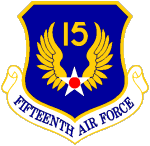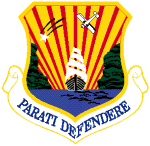



Flying from Shemya
Our two months at Shemya counted as three months at Eielson and winter had departed from central Alaska. Life looked a lot better to us as we anticipated the extra $125 per month for flying pay.
After our first trip to Fairbanks it became obvious that the extra money would not go very far; the local economy didn't believe in change. There was no point in carrying change with you because everything was priced at whole dollar amounts.
The dating scene in Fairbanks was legendary. That is to say that there was a legend of places where there was interaction between men and women. With something like a 9 to 1 male/female ratio in interior Alaska, dates were something that happened to other people in faraway exotic places like Council Bluffs, Iowa.
The living quarters on Eielson were one step above those at basic training. The barracks were broken up by partitions of the type normally found around toilets in public restrooms. Unlike public restrooms, there was a curtain across the entrance instead of a lockable door. The wire from which the curtain hung would hum during minor earthquakes to ensure you didn't miss one.
The partitions extended from the outside wall to the aisle. The aisle wall consisted of two metal wall lockers with the space between the lockers providing the entrance. The square footage of the cubicles was calculated to meet the minimum requirements for air crew members, which is fifty square feet less than for Federal prisoners. [Prisoners also get their own toilet and sink.]
There was no mess hall in the 6985th barracks building, so you had to suit up to eat. Even if there were room for a refrigerator, the electrical system wouldn't handle it, and there was no way to prevent others from raiding it if you weren't around. A hot plate was out of the question, but canned foods like chili and beef stew could be warmed on the steam radiators.
Faced with these living conditions and a certain reticence by the Squadron to accept those of us who had gone to Shemya as qualified for the flights that involved landing in England, my friends and I became the permanent crew for the Rivet Ball missions flown from Shemya.
Rivet Ball was a reconnaissance aircraft, the one and only RC-135S.
The C-135 is the military version of the Boeing 707. There are only a few plain C-135's in the Air Force inventory. Most entered service as KC-135's, aerial refueling aircraft with a pod and boom attached under the tail of the aircraft. The C-135 has two main types: the early C-135A and the later B model. The major differences are in the engines and braking.
The A model had less powerful engines without thrust reversers and used a water/alcohol injection system for take offs. A mixture of water and alcohol is stored in a separate tank and sprayed into the engines on take off to boost the power available. The A model depends on control surfaces and wheel brakes to stop the aircraft.
The newer B model has more powerful engines negating the need for the injection system and thrust reversers to assist in braking.
Rivet Ball had started life as a KC-135 in 1959. It was based on the early C-135A with the smaller engines. The airframe was shipped to LTV in Greenville, Texas for major modifications. The obvious changes were the removal of the refueling boom, the large radome on the nose, the winglets and portholes on the starboard side, and the clear dome on the top.
The Ball was delivered to Detachment 1 of the 6th Strategic Wing on Shemya to keep track of the testing activities of the Soviet Strategic Rocket Forces and their range on the Kamchatka Peninsula. Reconnaissance missions in the northern Pacific were under the control of the 15th Air Force.
The mission was flown on an alert basis. You had to be ready to jump on the aircraft and fly whenever the word came down. You lived in the hangar with the aircraft and had to forgo alcohol unless there was a weather stand down. [The hangar doors had a large sign advising "Don't Open Doors at Wind Speeds greater than 55 MPH!", wind speed was a common reason for a stand down.]
The SAC personnel referred to those of us in Security Service as "Spooks" or "Secret Squirrels". Our areas were labeled "SS", which was unfortunate. They assumed that we limited ourselves to keeping track of the Soviet Air Defense activities, and that view was half true.
The crew consisted of three linguists, a Morse code specialist, and a maintenance technician. One of the linguists and the Morse code specialist tracked air defense, but the other two linguists grabbed everything else that was available.
The regulars were four linguists: myself, Mike White, Ned Consolver, and Lu Rominiecki. The Morse specialist and the maintenance technician were assigned by rotating through the list of all those at Eielson with the specialty. The third linguist generally was assigned at the whim of the 6985th NCOIC of Operations.
Mike was the senior among us, already on his second tour in the Air Force. He wanted out of Alaska as soon as possible. He was a very low-keyed guy from Kansas.
Ned, Lu, and I had been stationed together since Basic Training.
Ned was from upstate New York and had two great passions: his wife and his red V8 Mustang GT. He was a great person to have at a party because he was always up and enjoying life. If life handed Ned lemons, he would not only make lemonade, he would carbonate it.
Lu was from New Jersey and was a quiet, happy person. He was an avid photographer, not simply taking pictures but processing and printing them when he could get access to the equipment. He was the best person at handling money I have ever known. He wasn't a miser, but he didn't spend money unless he really wanted something. He often had several paychecks that he hadn't deposited.
Lu had two problems: eyesight and uniforms.
He wore the thickest glasses I've ever seen, and some of us wondered how he had gotten into the Air Force. We made a point of watching out for him, because if something wasn't directly in front of him, he couldn't see it.
The other problem was his effect on uniforms. Lu could take a uniform out the plastic and fifteen minutes after he had put it on, it looked like he had been sleeping in it for a week. It was amazing, and caused him no end of problems with his supervisors.
For the rest of 1968 we settled into a regular schedule. Mike and I became one crew with Ned and Lu forming the other.
Life was quite tolerable on the "Black Pearl". Of special note were the catering capabilities of Colonel Ratto, Commander of the Detachment, and his radio repairman, Tommy Thompson. After a flight we would return to a buffet laid out in the hangar. It wasn't always clear where the food came from, I know that a lot of it was not served in the mess hall. It was a definite plus for "Rock" duty.
The room in the hangar assigned to us was definitely better than what we had at Eielson. There was more space, janitorial service, and less uniformity. It was still "military", but not excessively.
The Aircraft Commander, Co-pilot, and Navigator were the flight deck crew. Security Service had the tail section. In between was the "Circus", Electronic Warfare Officers and the two photographers for whom the aircraft and mission were designed.
The "Circus" was like the fraternity that was always on the verge of being thrown off campus. The photographers were nice, normal people, but the EWO's were definitely "hyper".
[The EWO's stayed annoyed at me on missions. I used a piece of gear that had a transponder built into it. No matter how often I asked the ground stations to avoid using the transponder when sending messages, they continued to do it. The signal sent out by the transponder blocked reception of all other signals.]
We had a visit by General Catton, the Commander of the 15th Air Force. Colonel Ratto had the place shining to the extent it was possible and probably felt that the visit would have an impact on the possibility of a star and his next assignment.
Some time in the early morning hours of the visit the "Circus" decorated the nose of Rivet Ball with a shark's mouth and glaring eyes similar to the P-40's of the WWII Flying Tigers.
When added to the fact that the General nearly broke his neck tripping on the loose floor trim just forward of my position, I don't think Colonel Ratto was surprised to be posted to Minot AFB after Shemya. [Lieutenant Colonel McMahon, the Colonel's replacement, wasn't nearly as much fun.]
As 1968 closed out the Black Pearl's Secret Squirrels were over the hump on our way out of Alaska. We were also awaiting the rumored arrival of a second aircraft, Rivet Amber.
Mike and I pulled the early January, 1969 duty. Carl Denton was Morse, Dick Steen was the technician, and Gene Willard was the third linguist.
On Sunday night, January 12th we launched. There was nothing particularly memorable about the mission itself. An hour's worth of work at the 6984th Ops to take care of the immediate reports after a quick sandwich from the buffet and then to bed, was my plan as we turned onto final just after midnight.
The aircraft settled onto the runway and everything was normal until we reached the point at which the braking normally started. Instead of being pushed back into the chair, we continued to zip along.
On the intercom the amount of runway left was being called off. Right after 3000 feet, someone said "Ooooh, shit!", which was followed shortly afterward by "Ride 'em Cowboy!"
There was a short period of zero G, like a car cresting a hill or a fast elevator descent, and then I was slammed into the chair with the sound track of Godzilla stomping the Tokyo subway playing in the background.
Gene Willard stood up from the airline seats by the rear hatch, opened it, deployed the escape rope, and dropped into the night. He was followed by the rest of the people in the tail section.
I noticed that no one from the "Circus" had come through and wondered about it. To ensure that no one needed help I went forward.
I could smell the fuel and heard hissing that I assumed was the oxygen system leaking. There was a red glow ahead of me filtering into the aircraft from the port side. After a static spark jumped from my right hand to a piece of equipment, I was fairly well convinced that this was the dumbest thing I had ever done.
I went forward to the center of the aircraft and saw Major Achor, the Aircraft Commander heading towards me. I told him the back of the aircraft was clear, turned around and headed for the rear hatch.
After sliding down the escape rope I realized that the second dumbest thing I had done was to take off my gloves at some point. I left my fingerprints and the skin they were attached to on the rope.
After scrambling up the slope to the end of the runway and looked back and realized that the red glow I had noticed inside was from the landing lights. Somehow Major Achor had managed to go to the right and avoided slamming into the pylons that supported the lights.
We were driven to the medical clinic where the very experienced Chaplain had arrived with a case of beer and a carton of cigarettes. There were no serious injuries, Major Achor had a back strain and I wasn't the only one who went down the rope without gloves. Captain Schultz, the Co-pilot, had the toe of a boot crushed, but he wore oversized boots and escaped harm.
Later in the day, probably tipped off by a trawler, a pair of Badger-E's [TU-16R] made a low pass to photograph the crash. The E-type has a photography module in the bomb bay. They were probably VMF-TF [Soviet Naval Pacific Fleet] aircraft from Petropavlovsk on Kamchatka.
An investigation found out that there was ice on the runway at Shemya that had been sprayed with de-icer. The de-icer created a pond of slush at the primary braking points and the aircraft hydroplaned off the end of the runway.
Rivet Amber was rushed to the Rock to take over the mission. Amber was a very different aircraft. Amber specialized in radar, not photography.
Behind the matte gray fiberglass that was the outer skin of Amber on the starboard side from the front of the wing to the flight deck was the world's largest airborne radar array.
They were testing systems one day and the radar was raising steam off the surface of the ocean. If the "Circus" had flown Amber they would have been using it for popcorn.
Amber was based on the C-135B and had thrust reversers on the engines, which made me a happier camper. It was obviously a newer aircraft than Ball had been and the Security Service positions reflected that.
It was irritating that whoever designed the newer equipment hadn't worked with the people who used it, because some of the "improvements" made the equipment more difficult to operate. It was better, more powerful equipment, but it was like having a new stereo installed in your car and finding out that the controls can't be used unless you lean over.
That Spring we pulled a great TDY. Originally scheduled to go to Johnson Island, we went to Hickham AFB on Oahu in Hawaii.
It was a little strange because the base had apparently run out of Air Force crew vehicles and assigned us a gray crew cab that said Atomic Energy Commission on the doors. That truck made people nervous, especially when we had to launch and went speeding around the base with the lights flashing.
The Secret Squirrels did themselves proud surfing, scuba diving, and sunbathing during the down time. It was a happy, sunburned, salt-encrusted crew that returned to Shemya.
Life was routine until the end of May. I took my first leave in Alaska to see some friends graduate from college in Rochester, New York, and then drove down to my parents home in Florida.
I heard about Rivet Amber's crash while I was driving South.
From reading the available information, my best guess is that they ran into Clear Air Turbulence and the fiberglass cracked and pealed. That would have made the aircraft uncontrollable and subsequent turbulence would have caused the aircraft to break in front of the wing. It probably hit the water in two pieces and is laying under 5000 feet of salt water.
The seas are always rough during the season change and the only debris that might have floated would be the skin. The aircraft was reinforced inside to allow the metal skin to be replaced by the fiberglass, and probably remained generally intact.
I lost two of my best friends, Ned and Lu, when Amber went down.
Dick Steen, the Maintenance Technician, who was on Ball when it crashed, was also on Amber's last flight.
Bennie Benevides was the Morse Specialist and a great guy on the airplane or at a party.
I didn't really know the extra linguist, Douglas Arcano, he was too new to the mission.
The mission on the Rock shut down and Security Service pulled back to Eielson where the remaining Secret Squirrels finished our tours.
I went down to the 6949th at Offutt AFB in Omaha, Nebraska and Mike White went to Goodfellow AFB in San Angelo, Texas.
I would have loved to have seen Ned's wife giving him hell about the car in the Nebraska winter, and the Strategic Air Command dealing with Lu's uniform, but it wasn't meant to be.